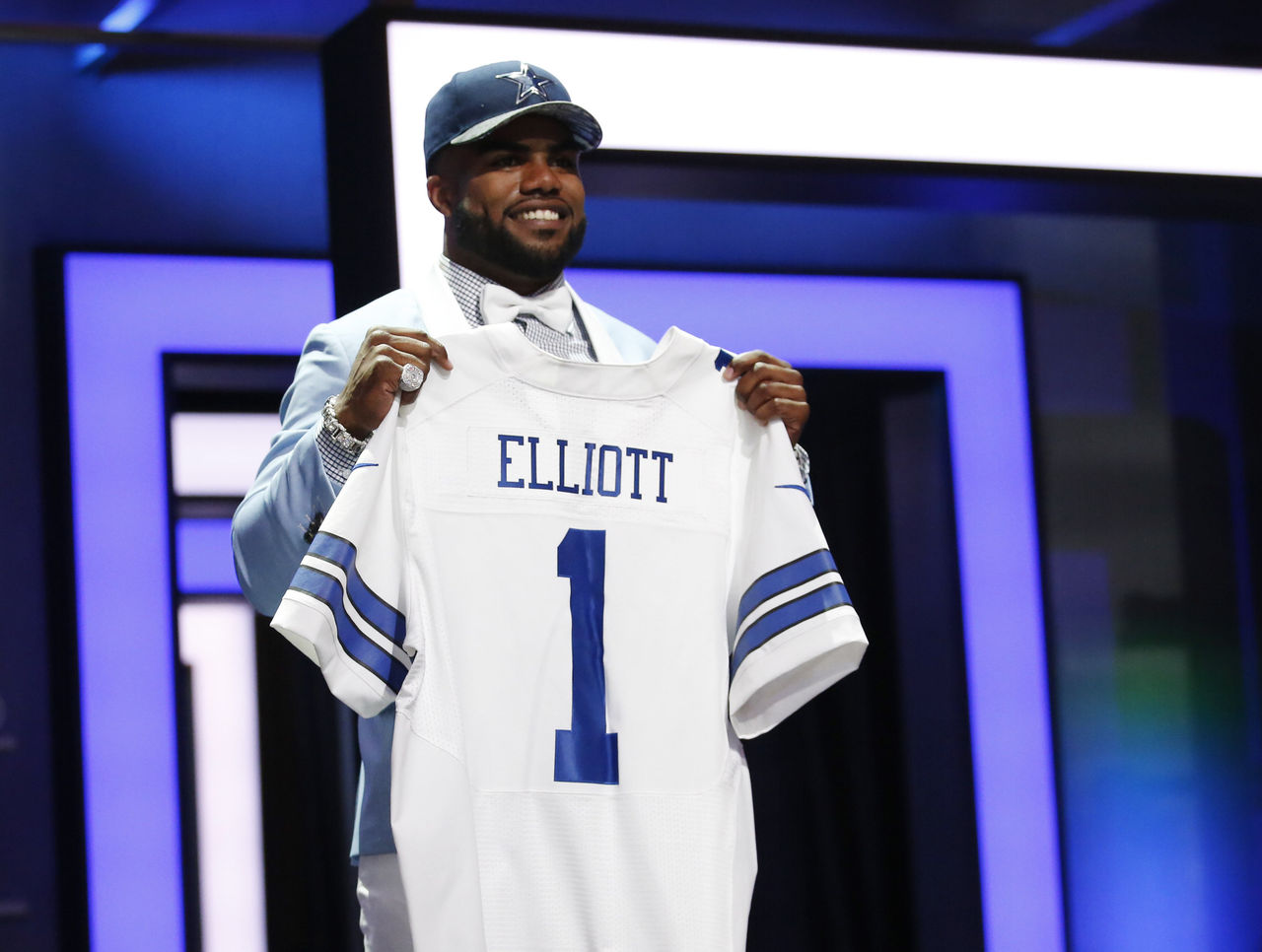The only fantasy football draft statistic that matters
Information overload can be a dangerous thing when it comes to fantasy football research.
Fantasy fanatics have access to tens of thousands of articles on strategy, tips, tactics and a host of other draft-related topics. Select any two random posts, and you might be told vastly different things within them; one writer might suggest making Dallas Cowboys rookie Ezekiel Elliott the first pick off the board, while the other might recommend avoiding him altogether.
At this point in the pre-draft process, your focus should be on keeping things simple. And when it comes to identifying potential value plays or busts this coming season, you should rid your mind of the statistical clutter that permeates so many drafters' strategies and key in on the only stat that matters come draft time.
Chase the yards.
Narrowing down your draft strategy to a single statistic might seem overly simplistic, but there's a sound reason for it. Consider some of the other statistical measuring tools you might be considering at your draft:
ADP: This gives you a general idea of who might be available at your draft slot, but it's by no means a slam dunk - and depending on how up-to-date your ADP figures are, relying too heavily on this metric may actually work to your detriment. Basing your strategy on drafting players you're "supposed" to pick based solely on ADP is an option fraught with problems.
Previous Results: Relying on what a player did last year, or the year before, can provide some insight into his overall skill level. But year-to-year results vary significantly, even for the best players in the league - and there's little to no predictive value in how a player performed in 2015. Recency bias is strong in drafts, and it's the fastest path to a ninth-place finish.
Strength of Schedule: This is one of the least helpful metrics in any pre-draft plan. So much goes into how an offense or defense performs from year to year - and looking at last year's results to frame a strength-of-schedule argument this season simply doesn't work. This is especially true for teams that faced extreme circumstances (injuries, poor scheme, etc.) in 2015.
Touchdowns: If you're going to use prior years' stats in the player evaluation process, you should pay close attention to how much of a player's fantasy value was generated through touchdowns. TD totals fluctuate dramatically, and are next to impossible to project with any accuracy. More often than not, big-TD players one season become underwhelming fantasy options the next.
That leaves yardage as the most reliable measuring tool for evaluating a player's 2016 outlook - and there are three main factors that impact how many yards a player might generate over the course of the season:

Opportunity
It's the simplest premise in all of fantasy sports: Opportunity equals fantasy production. And while it doesn't always pan out that way, the majority of skill players outproduce their previous year's stats when given a more significant offensive role than the prior season.
It's the reason why receivers like the Colts' Donte Moncrief, the Lions' Marvin Jones and the 49ers' Torrey Smith have been climbing up draft boards since the start of the preseason. All three are looking at increased roles in offenses that produce a great deal of fantasy value.
It's also why Elliott might wind up as the top running back in fantasy football despite being a rookie. Between his elite skill set, his advanced run-blocking ability and the Cowboys' powerhouse offensive line, he finds himself in as good a situation as any running back in the league.

Targets
Targets translate directly to yards. The more footballs thrown a receiver's way, the more catches he'll have, and the more yards he'll accumulate. This is especially critical come draft time, since high-volume receivers are often lumped in with WRs who had fewer catches in 2015, but more touchdowns.
Atlanta's Julio Jones is the poster boy for why yardage matters so much more than TDs. He led the NFL in receiving yards last season, yet is being drafted as the No. 2 or 3 player in most fantasy drafts behind Pittsburgh's Antonio Brown, who was second in yards but had two more touchdowns (10 to 8).
Jones has racked up more than 3,400 yards the past two seasons, but has just 14 TDs to show for it - as many scores as Seattle's Doug Baldwin had just last season. But if Jones continues to see that kind of volume, the touchdowns will come - and you'll want him on your team when they do.

Offensive Scheme
Even the best receivers miss out on being top fantasy options if they aren't in WR-friendly offenses. Conversely, great offensive schemes can make average wide receivers look good, and good receivers look great. It's critical to know which offenses are expected to be fantasy-friendly.
Consider the Baltimore Ravens. Head coach Marc Trestman is considered the most pass-happy coach in the NFL, and there's no reason to think the offense will run any differently in 2016. That increases the value of every player central to the team's offensive success, particularly in the passing game.
Teams that make a commitment to the passing game - and stick to it - will often produce more yards than teams with a more balanced approach. And when it comes to great late-round options, you could do worse than keying in on players in high-powered offenses.
HEADLINES
- Bills owners explore selling minority stake in franchise
- NBA Podcast: Warriors postmortem, untimely injuries, 1st-round preview
- Conn Smythe Trophy betting: Strategizing standouts among Cup contenders
- Pirates' Chapman drops appeal, will serve 1-game suspension Friday
- NBA Eastern Conference opening-round betting preview